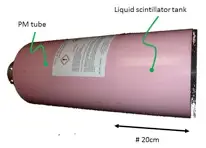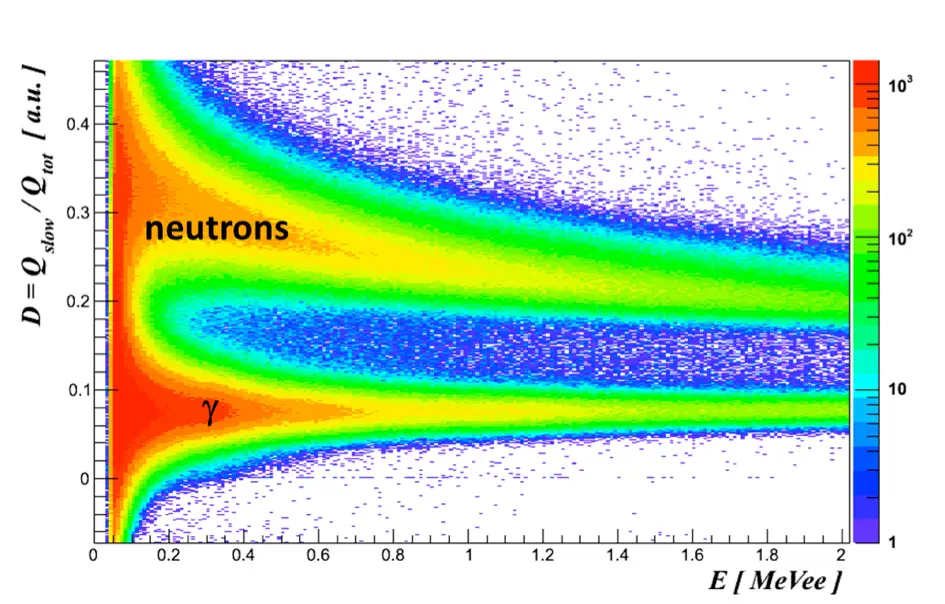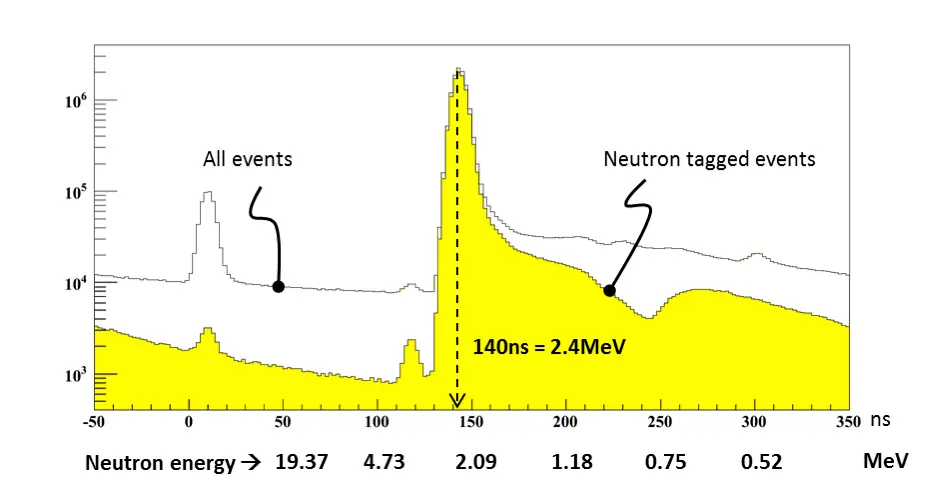FASTER USE CASE
NEUTRON ENERGY MEASUREMENT & n/γ DISCRIMINATION USING A LIQUID SCINTILLATOR
SUMMARY
Neutron energy measurement is a difficult task in nuclear physics experiments. Being neutral particles, it is impossible to relate the energy they deposit in materials to their kinetic energy. The “simplest” way to perform energy measurements on neutrons is to measure their time of flight. In order to maximize the probability of detecting fast neutrons at their first interaction (to measure their time of flight), we must use hydrogenated materials. This implies the use of organic scintillators.
A major difficulty in neutron studies lies in the fact that neutron fields are generally mixed with gamma (γ) fields (coming from targets, wall activation, radioactivity…). Measuring the interaction of a particle in a detector doesn’t necessary mean you detected a neutron.

Fortunately, liquid scintillators exhibit interesting properties. First they are hydrogenated ((C-H)n). Second, their light pulse shape depends slightly on the nature of the charged particle that created this pulse. When a gamma interacts in a detector, it is a recoil electron that produces the signal. But when a neutron interacts on a hydrogenated material, the recoil particle is generally a proton. We have here the premises of neutron versus gamma identification by the mean of pulse shape analysis techniques.
WHAT WILL YOU FIND IN THIS DOCUMENT ?
- An example of neutron energy measurement using the time of flight between an accelerator driven neutron source and a liquid scintillator.
- The principles of neutron vs γ pulse shape discrimination.
- How the dynamic baseline restorer and the clocking of FASTER simplify data analysis and timing calibrations.
- How to integrate scintillator pulse shape discrimination and accelerator radio-frequency demodulation in the FASTER data acquisition and processing system.
PICTURES


